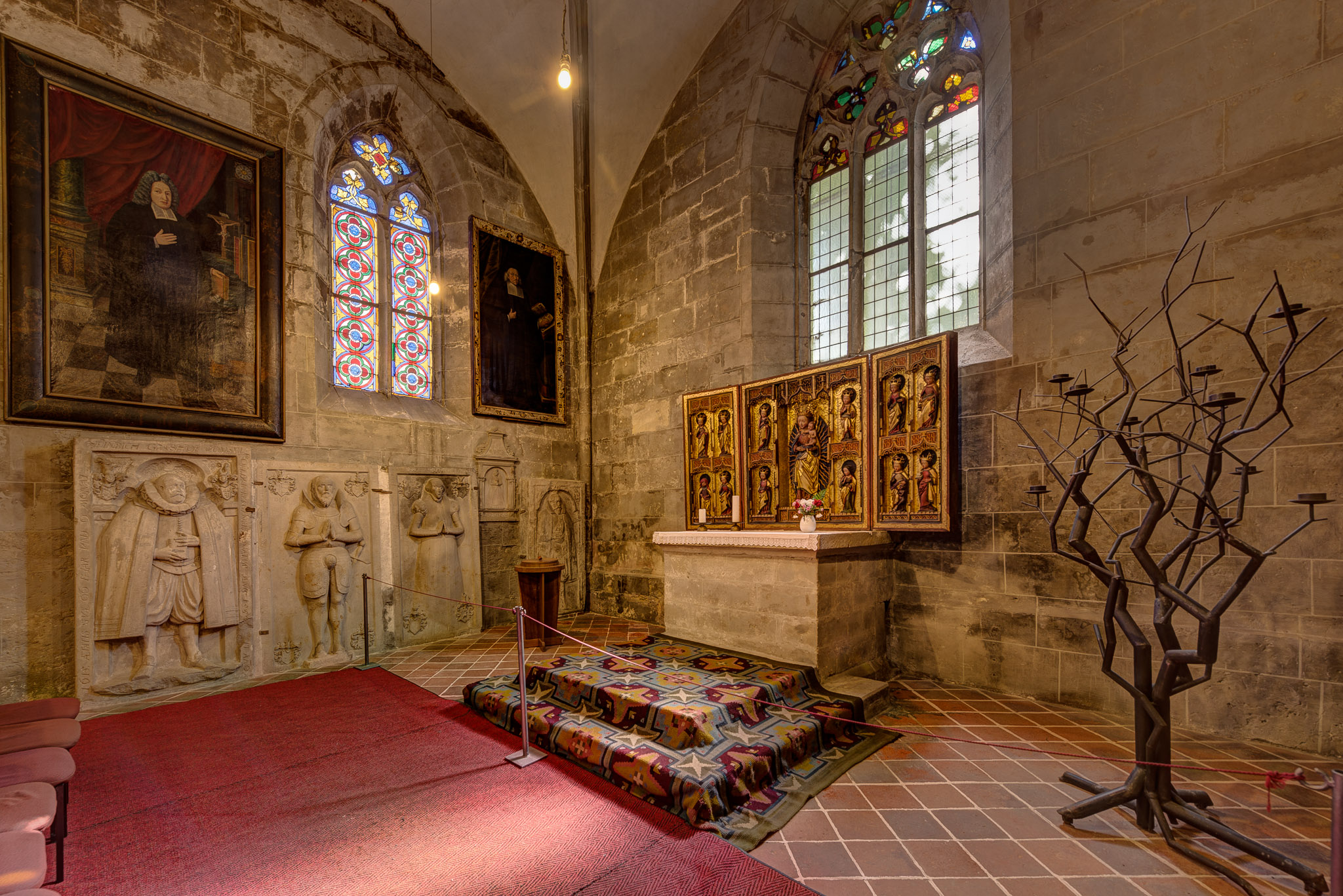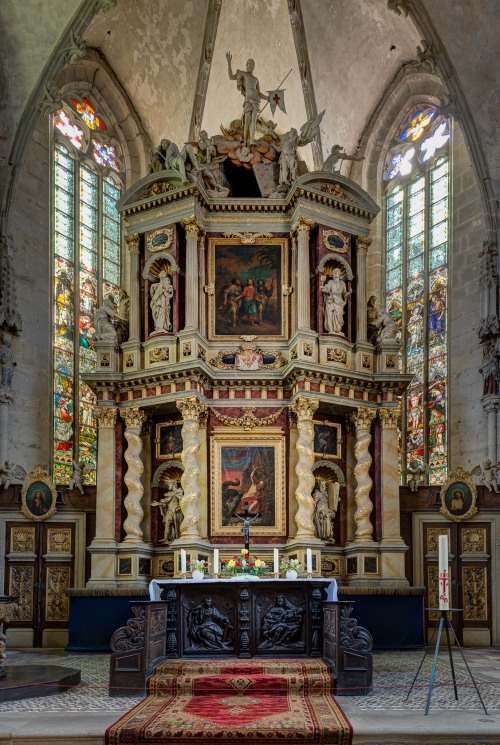Consecrated by a woman, rebuilt and repaired with dramatic asymmetry, this church stands in the center of a World Heritage town of narrow crooked streets.
The original cross-shaped, romanesque basilica on this site was consecrated in 1173 by Abbess Adelheid III. The bishop of Halberstadt objected to this procedure but was overruled by the Pope who confirmed the right of the Abbess to perform the consecration.
The first thing one notices on entering the nave is that the axis of the nave is offset significantly from the axis of the choir. The center aisle is more than a meter narrower on the right hand side than the choir. Furthermore, the first arcade opening on the south is several feet wider than the opening on the north.
The reason for this misalignment may have been funding. When the choir and nave were rebuilt in the 15th century as a Gothic hall church, the north side of the nave was widened, and new foundations were established for the piers of the arcade. On the south side, as apparent cost saving measures, the old foundations were retained, and a portion of the former transept was retained as the east wall of the aisle.

I can imagine the architect thinking, “If the client won’t provide the funds to do it right, I’ll build something they will regret for the next 1000 years.” But seriously, the building is still in use 600 years after these practical measures were taken. That’s more than we can say for a lot of more recent structures that have disappeared.

The asymmetrical spires are the result of reconstruction after fires in 1701 and 1901.

The Kalandskapelle was the gathering place of the local chapter of a charitable society of prosperous citizens and priests who met on the first day of each month (i.e. of the calendar). The society was quite widespread from the 9th century through the end of the middle ages, and there are a couple chapters extant even today. The altarpiece dates to about 1480.

The high altar, dating to about 1700, includes the familiar, the apostles Paul and John, Moses, David, Christ on the road to Emmaus, as well as some unusual images for an altar, Jonah and the fish and Samson carrying the gates of Gath.
The pulpit dates to 1595 and is carved out of linden wood with images of the garden of Eden, the apostles, and the Passion.

This statue of David was once used as a support for the organ loft.
Information for this article was gathered at the church and from the booklet “Quedlinburg, Marktkirche St. Benedikti, Welterbe der UNESCO.” ISBN 3-89643-598-1





I have certainly enjoyed seeing your photographs and reading the information. What a wonderful way to share your trip!
LikeLike
Your photography brings into view parts of the world we would
never otherwise see. We are the richer for it. Thank you so much.
LikeLike